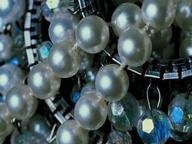Quiz Answer Key and Fun Facts
1. The oldest evidence of the wearing of bracelets dates back to about 5,000 years ago in ancient Mesopotamia.
2. What design was popularly used on bracelets in ancient Egypt to represent rebirth?
3. Which people in ancient armies commonly wore bracelets called bracers?
4. For the traditionally worn Martenitsa bracelet, what color strings are used to form the bracelet?
5. In parts of India, what type of bracelet is used to signal marital status?
6. What is the name of the iron bracelet worn by Sikhs?
7. What is the purpose of the Azabache bracelet worn in Latin America?
8. During which war was the wearing of POW bracelets common in the United States?
9. In China bracelets are traditionally made with which of the following materials to offer protection to the wearer?
10. Who is credited with popularizing the use of charm bracelets in the 19th century?
Source: Author
ponycargirl
This quiz was reviewed by FunTrivia editor
kyleisalive before going online.
Any errors found in FunTrivia content are routinely corrected through our feedback system.
